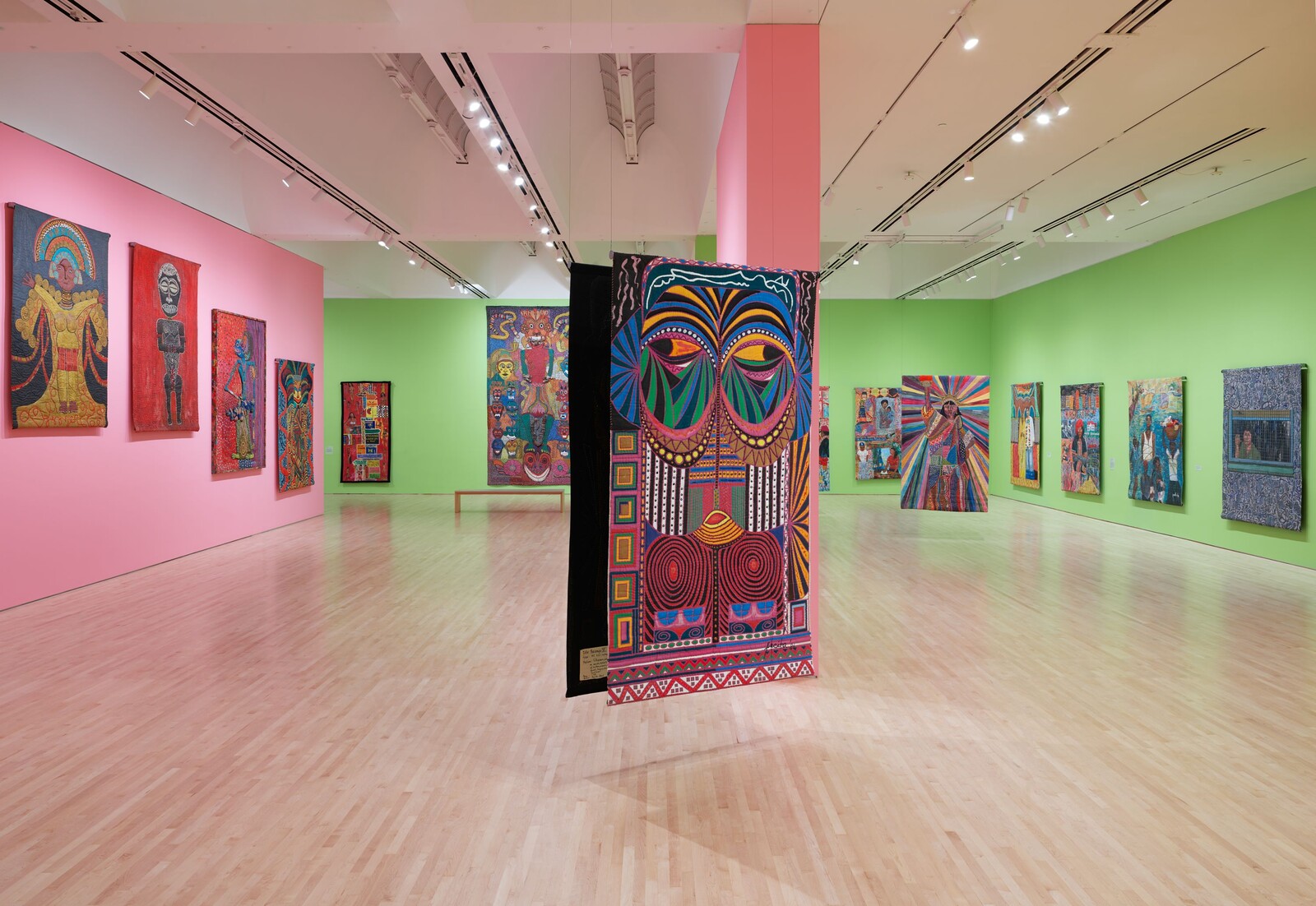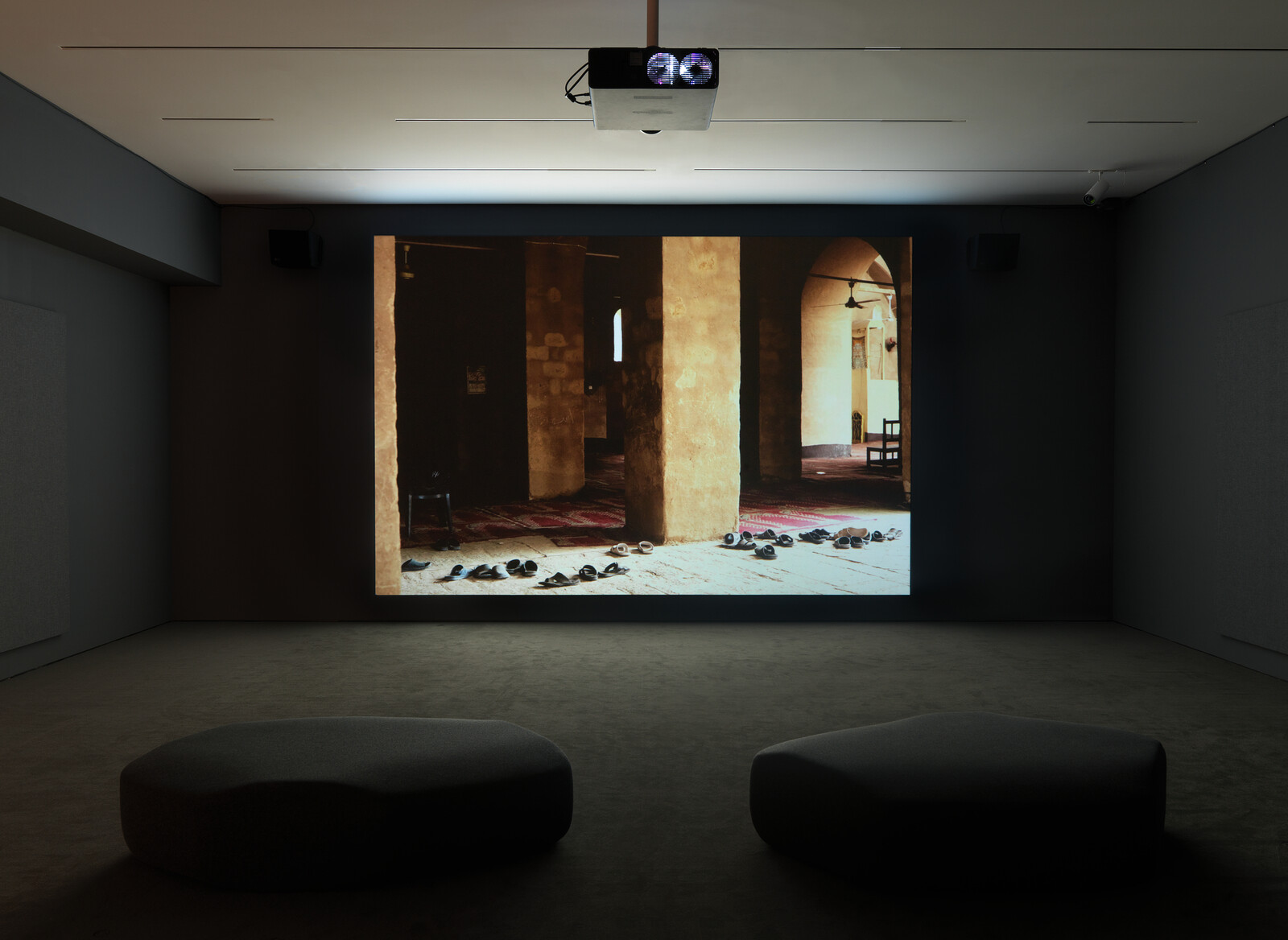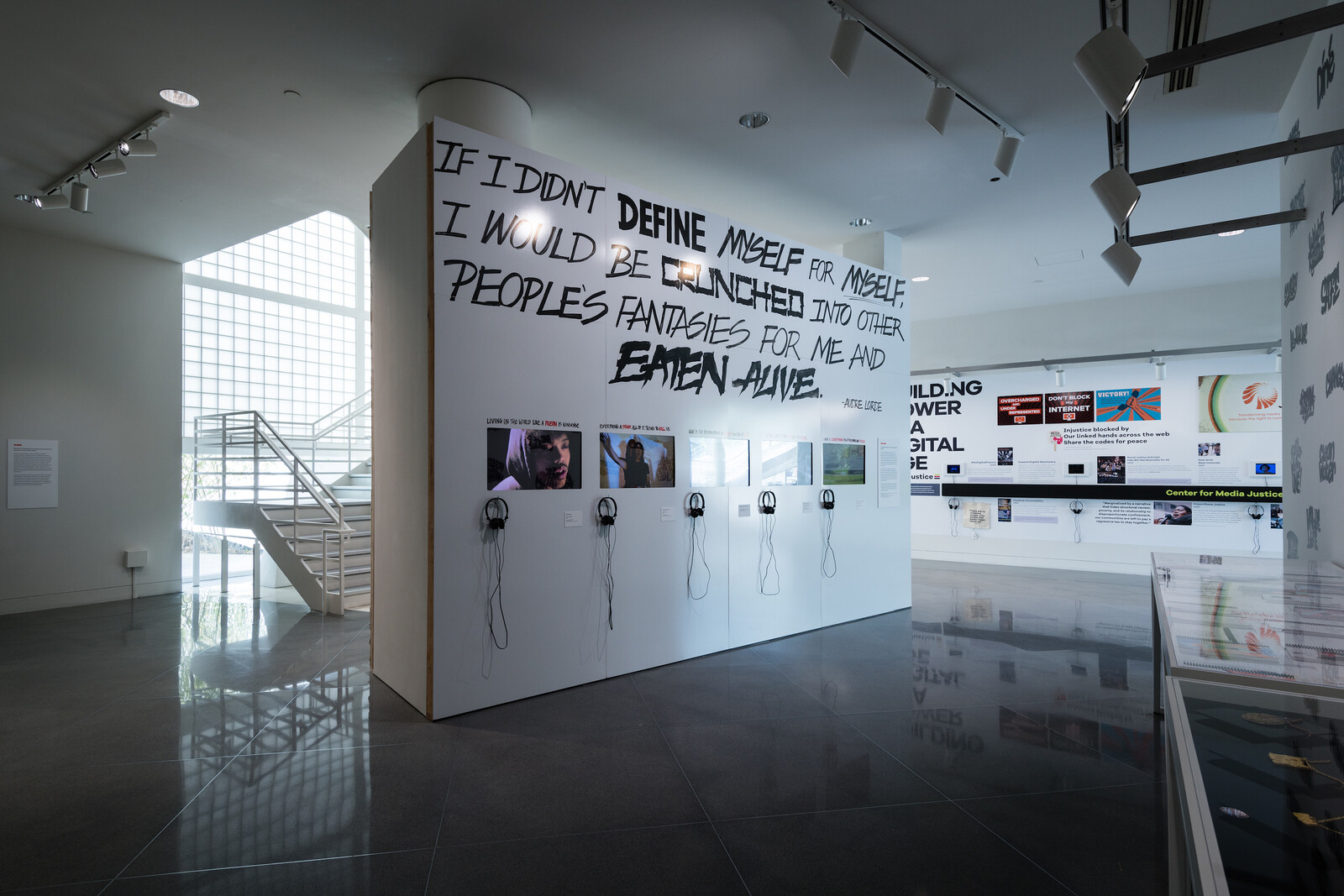Categories
Subjects
Authors
Artists
Venues
Locations
Calendar
Filter
Done
December 22, 2023 – Review
Pacita Abad
Tausif Noor

To discuss the life of Pacita Abad is to enumerate the diverse places to which she traveled (some sixty countries across six continents), her expansive artistic output (nearly 5000 large-scale works), and the litany of materials and techniques she applied to the surfaces of her signature stuffed-and-quilted canvases, or trapuntos (sequins, beads, batik prints, and phulkari embroidery, to name just a few). Over a thirty-two-year career—she died of cancer in Singapore in 2004—Abad sidestepped hierarchies between craft and high art and unraveled received notions of the local, national, and global, pursuing instead a vibrant eclecticism that was often at odds with the dominant artistic movements of her time.
The retrospective at SFMOMA—arriving from the Walker Art Center before stops at New York’s MoMA PS1 and the Art Gallery of Ontario in Toronto—follows Abad’s artistic career as it was shaped by global postwar politics from the aftermath of national decolonization movements in Asia and Africa in the 1960s, through the humanitarianism of the 1970s and ’80s, and the heyday of multiculturalism in the US in the 1990s and early 2000s. In this, Abad’s trapuntos in particular function as what the curator Shabbir Hussain Mustafa has aptly termed an “archive of the …
November 14, 2019 – Review
Hannah Collins’s “I Will Make Up a Song”
Monica Westin

In 1945, Hassan Fathy, an Egyptian modernist architect and pioneer of sustainable design, was tasked with relocating 7000 residents from the village of Gourna, on the West Bank of the Nile, to a new site several miles away. The original town of Gourna was built on top of a tomb that residents had been illegally raiding to support the local economy for generations; eventually, government authorities commissioned the massive rehousing project in order to preserve what was left of these artifacts.
In his 1969 book Architecture for the Poor: An Experiment in Rural Egypt, Fathy describes the daunting task of creating the entirely new municipality of New Gourna: “All these people, related in a complex web of blood and marriage ties, with their habits and prejudices, their friendships and their feuds—a delicately balanced social organism intimately integrated with the topography, with the very bricks and timber of the village—this whole society had, as it were, to be dismantled and put together again in another setting. […] It was uncanny enough that a whole village should be projected without reference to the State Building Department, but it was even more unnerving to find myself with the sole responsibility for creating this village.”
Fathy …
July 3, 2019 – Review
Suzanne Lacy’s “We Are Here”
Monica Westin

The dominant form of Suzanne Lacy’s work is dialogue. Deeply collaborative and painstakingly structured without being scripted, the conversations she produces combine formal elements of happenings (Allan Kaprow was one of her mentors) with politically focused content that is often activist in approach and always attuned to power as it plays out in the lives of everyday people. Lacy came of age as an artist during the beginnings of feminist art (she left a career in zoology to study with Judy Chicago), and her work from the 1970s first foreshadowed and later shaped much of what we now call social practice. Her thought has also been deeply intersectional long before most white feminists learned about the concept.
“We Are Here,” Lacy’s first major retrospective, is massive, spanning two very different institutions in San Francisco. (Currently based in Los Angeles, Lacy was previously the chair of what is now the California College of the Arts in San Francisco.) Curators from the San Francisco Museum of Modern Art and the Yerba Buena Center for the Arts co-organized the exhibition, and the two arrays of Lacy’s work in their galleries offer different curatorial approaches to presenting an opus that itself operates largely as a …